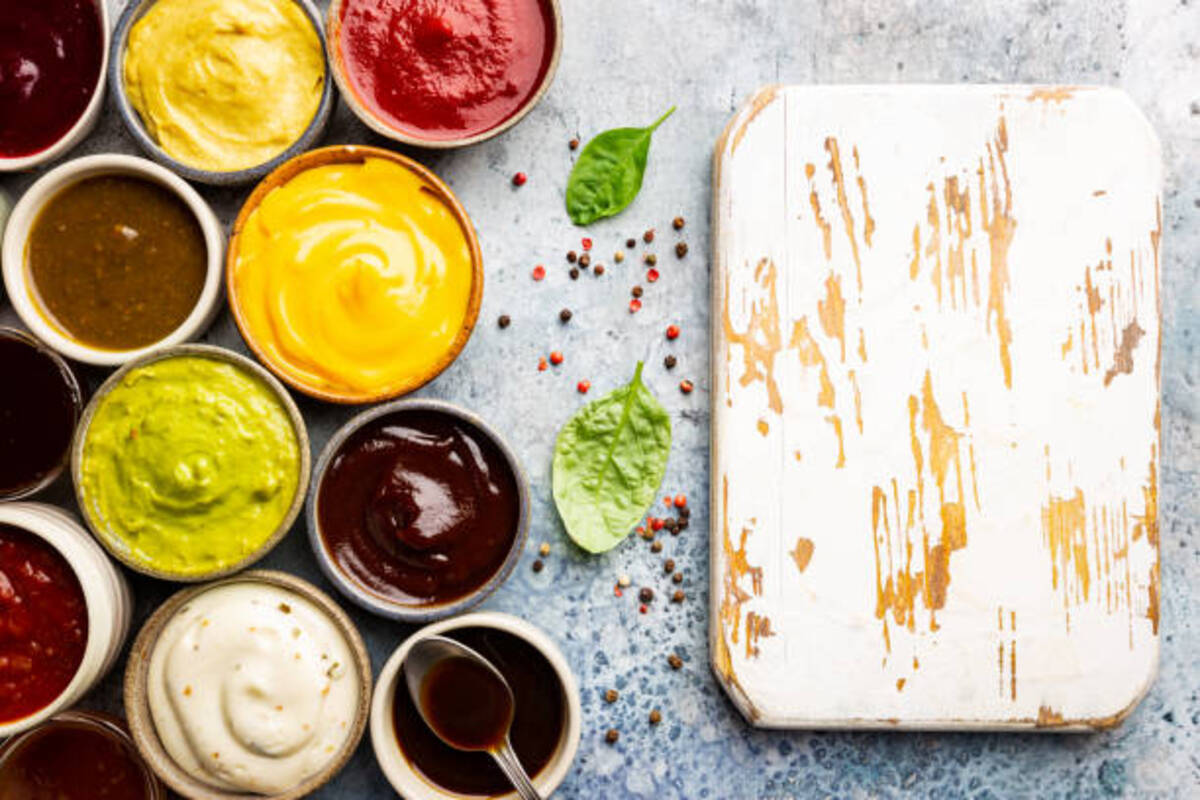In the culinary arts, the term “mother sauce” refers to any one of five basic sauces, which are the starting points for making various secondary sauces or “small sauces.”
They’re called mother sauces because each one is like the head of its own unique family.
Advertisement
A sauce is essentially a liquid plus some sort of thickening agent along with other flavouring ingredients. Each of the five mother sauces is made with a different liquid and a different thickening agent—although three of the mother sauces are thickened with a roux, in each case the roux is cooked for a different amount of time to produce a lighter or darker colour.
Here are the five mother sauces of classical cuisine.
1. Béchamel
You may know béchamel sauce as the white sauce that gives chicken pot pie its creamy texture, or as the binder for all that cheese in macaroni and cheese. The sauce is also used to make scalloped potatoes, lasagne, and gravy. In classical cuisine, béchamel may be poured over fish, eggs, or steamed chicken. While béchamel has a neutral taste on its own, the classic mother sauce adds a unique creamy texture that often makes food taste hearty and comforting.
To make béchamel, cooks first create a roux by stirring flour into melted butter to form a paste. The paste is then cooked over medium heat for several minutes, which removes the floury taste, before a liquid, most commonly milk is added. The flour paste thickens the milk to create a versatile creamy white sauce. Salt and pepper may be added, as well as other flavourings including bay, nutmeg, onion, clove, or cheese.
2. Velouté
Velouté means velvet in French, and that is the texture you will find with this original mother sauce. To make a velouté, the cooks create a roux with butter and flour and then add the clear stock. Chicken, turkey, and fish stock are most commonly used, but these days, you will also find a vegetarian velouté.
When finished, velouté has a delicate, light flavour and a smooth texture. The sauce is usually served over poached or steamed fish or chicken; the light flavours of the sauce complement the light, delicate meat. By adding wine, lemon, or other flavourings, cooks can adjust the flavour of this mother sauce.
3. Espagnole
This dark brown sauce, one of Carême’s original mother sauces, gives that signature richness to boeuf bourguignon, lamb, duck, veal, and other hearty dishes. Espagnole is the basis for demi-glace, sauce Robert, and bordelaise sauce.
As the other mother sauces, Espagnole starts with a roux. In this case, the flour paste is cooked until the flour browns. It’s important that cooks stir the roux while it browns so the paste does not scorch.
When the roux has finished cooking, browned mirepoix — which is a mixture of diced celery, carrot, and onion — pureed tomato, and beef or veal stock are added.
4. Sauce Tomate
Sauce Tomate, or tomato sauce, bears a slight resemblance to the Italian style tomato sauce served with pasta. This mother sauce is often served on top of pasta (especially gnocchi) or polenta, or with grilled meat or vegetables. On Carême’s day, sauce tomato was thickened with a roux, but this is no longer the case.
Now, tomatoes are cooked down into a thick sauce that is flavoured with vegetables and pork. Roux can thicken the sauce quickly if there’s little time. Carême classified sauce tomate as a mother sauce in the early 20th century.
5. Hollandaise
You may recognize Hollandaise sauce from eggs benedict or as a topping for lightly steamed asparagus. The sauce can also accompany richer foods, like meats. Like sauce tomate, this sauce was a later addition to Carême’s list.
Hollandaise sauce is an emulsion where egg yolks are suspended in melted butter to create a creamy, rich sauce. Optional flavourings for Hollandaise include cayenne pepper, white wine vinegar, or lemon juice. Hollandaise is the basis for several other classical French sauces, including sauce Bearnaise.
To make Hollandaise, the egg yolk and melted butter are whisked together carefully to create an emulsion. New cooks often struggle with Hollandaise, because the sauce can break easily, separating out the butter from the egg yolk.











